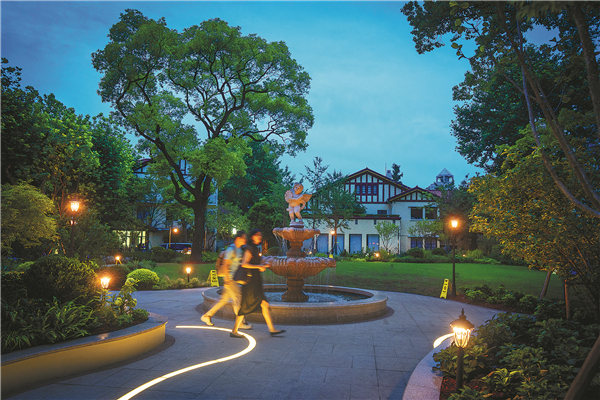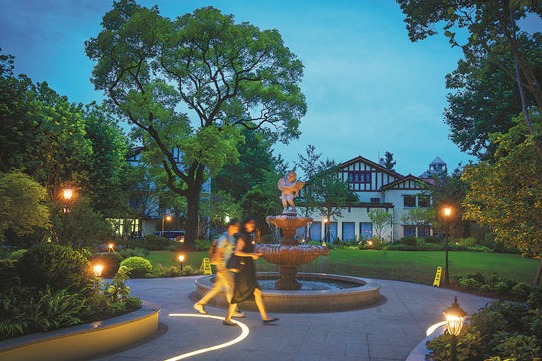[ad_1]

Number of parks and green spaces in the city continues to grow as authorities look to improve quality of life, Zhou Wenting reports.
In the spring of 2013, Yu Fangfei spent more than 90 minutes traveling by public transport from her home in southwest Shanghai”s Minhang district to Gucun Park in the city’s northern Baoshan district just to admire the cherry blossoms.
That spring, around 1.05 million visitors flocked to the park for the same reason.
This year, courtesy of a small new public park near her home, Yu spent just five minutes traveling on foot to admire the blooms.
According to Yu, the park was converted from a former construction site that was left idle for several years. Nowadays, the park is bustling both day and night, especially in the spring and summer.
It is just one of the many pocket parks that have sprouted up in the city since 2021 because of the campaign to create more green spaces for Shanghai residents to rest and relax and to spruce up communities.
The campaign to create such leisure spaces is part of Shanghai’s ongoing urban master plan.
Xu Mingqian, deputy director of the Shanghai Municipal Bureau of Planning and Natural Resources, said at a news conference on June 30 that the local government will step up the construction of community parks and pocket parks, and introduce more cultural, tourism, and sports resources to neighborhoods, providing residents with pleasant, highly accessible, and interconnected green spaces.
The plan also involves optimizing community circles so that every resident will have access to diversified services within a 15-minute walking radius from their home.
Pocket parks originated in the United States in the 1960s. Other cities around the world, including Venice and Barcelona, also have a mature network of pocket parks that brings nature into their cityscapes.
According to official statistics, there were 22,463 hectares of parks and green spaces in Shanghai as of the end of 2021, up from 16,848 hectares in 2012. This means that green spaces 27 times the size of the Shanghai Chenshan Botanical Garden, the largest botanical garden in the city, have been added to the city over the last decade.
Zhu Xinjun, chief engineer of the Shanghai Landscaping and City Appearance Administrative Bureau, said that the goal was to build many small parks instead of a few large ones as this would enable more residents to enjoy such spaces.
Shanghai had, by 2022, completed the construction or renewal of 390 pocket parks, and it will add another 80 to that number this year. The ultimate goal is to build at least 1,000 parks in Shanghai by 2025.
[ad_2]
